Before we dive into the technical details, we would like to extend our sincere gratitude to Gary Tong, our friend and collaborator from Colorlight. Your ongoing support and partnership have been invaluable to us, and we truly appreciate the expertise and dedication you bring to our work. Thank you for collaborating with us on this technical deep dive; your contributions are deeply appreciated.
In this LED Insights blog, we've partnered with Colorlight to demystify the complexities of LED processors and receiver cards—two critical components in digital displays. Understanding these elements is key to grasping the overall functionality of an LED display.
The LED processor (or video processor, controller, sender) converts and transmits video signals to the display, optimizing them for various applications. Colorlight’s processors feature advanced capabilities like scaling, colour correction, PIP, and low latency. (Skip to the bottom of this post to find out more about terminology /features referenced in this blog)
Meanwhile, the receiver card distributes this processed data to the individual LED modules, ensuring diode displays the correct colour. Mastering these components is essential for selecting the right equipment and achieving flawless, vibrant visual outputs.
Strap in—this one gets a bit techie!
Receiving Input Signal:
The LED processor receives input signals from various sources such as computers, media players, cameras, etc. These input signals may include digital video files, live video feeds, or other multimedia content types.
Signal Processing:
The LED processor takess the input signals to prepares them for display on the LED modules. This processing may include tasks such as image scaling, colour correction, brightness adjustment, and format conversion.
During signal processing, the LED processor analyses the input signals and determines how to represent the content on the LED display modules. This involves converting the input video signals into a format that is compatible with the LED panel's specifications, including resolution, colour depth, and refresh rate.
Pixel Mapping:
Once the input signals have been analysed, the LED processor maps the content to the individual pixels on the LED display modules. Each pixel on the LED panel corresponds to a specific location in the input video signal.
The LED processor determines which LEDs need to be illuminated and at what intensity to accurately reproduce the content from the input signals.
The data is distributed by pixel count. Each LED processor output can control a fixed number of total pixels. There are no fixed rules for the method of pixel distribution; some like to work in columns, rows, or in blocks.
Below: Diagram of pixel distribution:
![]()
Below: Data groups of one receiver controlling area
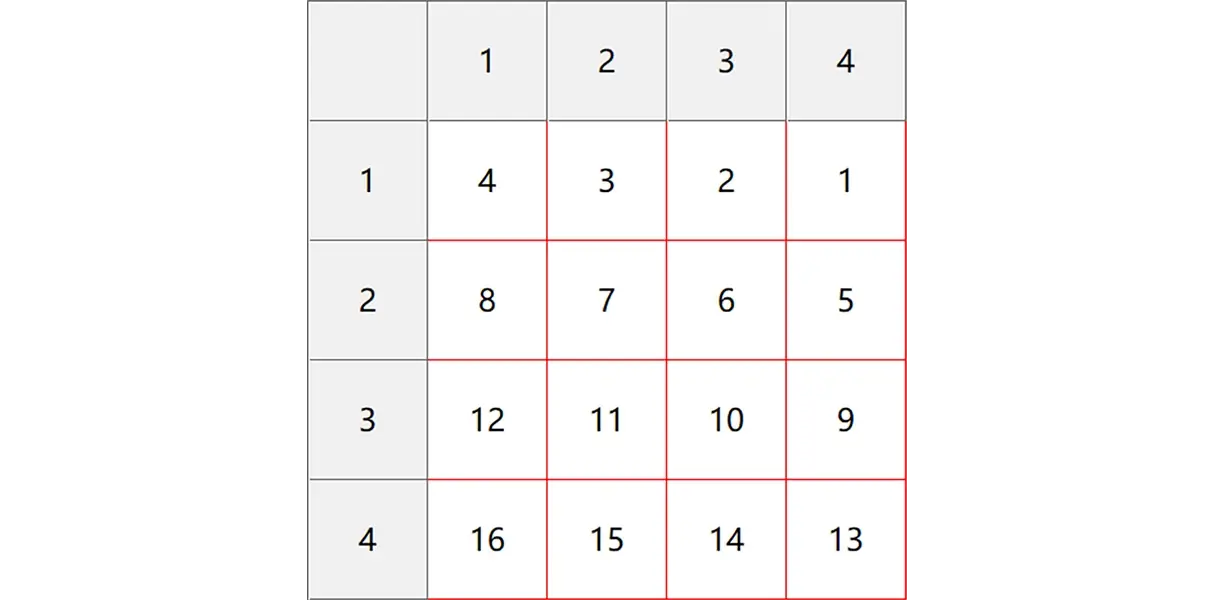
Below: All receiving card controlling area

Data Transmission:
After pixel mapping is complete, the LED processor sends data signals to the LED display modules to control the illumination of each pixel. These data signals typically include information about the colour, brightness, and intensity of each pixel.
The LED processor may transmit the data signals to the LED display modules using various communication methods, such as CAT cables or fibre optic cables.
The data runs in LED displays are typically organized in columns or blocks to balance the pixel load across outputs from the LED processor. Each colored line represents a single output connection, commonly using CAT6 cabling. Proper planning ensures that each column or block does not surpass the maximum pixel capacity that an individual output can handle, optimizing performance and maintaining display quality.
Display Output:
The final function of the LED processor is to combine all the separate pixel-mapped outputs into one synchronised image.
In a typical LED setup, the LED processor plays a crucial role in controlling and managing the LED display. Its primary function from a user perspective is to supply an endpoint in terms of inputs (think input UI on the back of a TV), but it does a lot more in the background.

Signal Processing:
The LED processor receives input signals from various sources such as computers, video players, cameras, or other devices. It processes these input signals to prepare them for display on the LED modules. This processing may include tasks such as image scaling, image cropping, image overlay (PIP), colour correction (YUV/ RGB formatting), brightness adjustment, and format conversion.
Below: PIP & Scaling
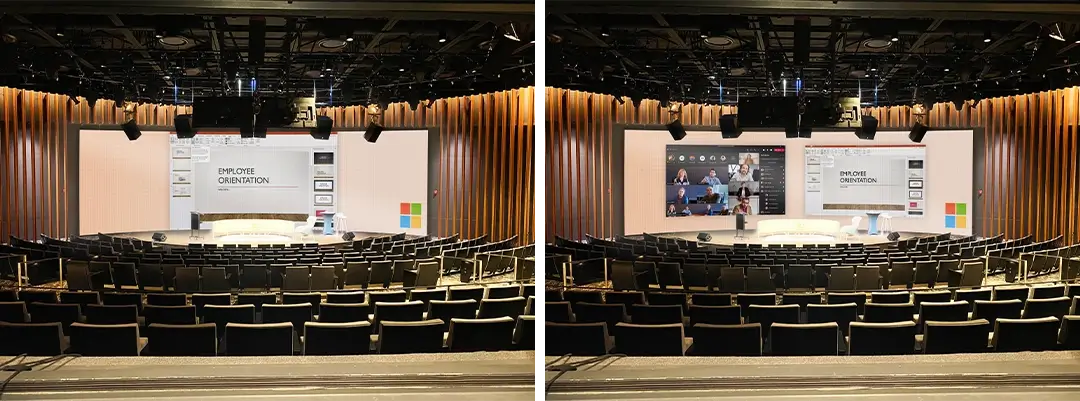
Below: YUV > RGB Formatting

Below: Cropping

Pixel Mapping:
Once the input signals have been processed, the LED processor maps the content to the individual pixels on the LED display modules. Each pixel on the LED panel corresponds to a specific location in the input video signal. The LED processor determines which LEDs need to be illuminated and at what intensity to accurately reproduce the content from the input signals.
Note: Pixels are mapped based on the maximum number of pixels a port can control and are often distributed in columns, rows or blocks.
![]()
Data Transmission:
After pixel mapping is complete, the LED processor sends data signals to the LED display modules to control the illumination of each pixel. These data signals typically include information about the colour, brightness, and intensity of each pixel. The LED processor may transmit the data signals to the LED display modules using various connection methods, such as Ethernet cables, fibre optic cables, or wireless connections.
Below: Various signal connection methods:


Benefits of 5g data transmission? The main benefit is the recudion in cabling and install complexity. It also improves this like input lag and frame drop amongst other benefits which we will cover in a later blog.
Image Enhancement:
In addition to basic signal processing and pixel mapping, many LED processors also include advanced image enhancement features. These features may include pixel-level calibration, colour space conversion, gamma correction, and real-time video processing algorithms. The LED processor optimises the visual quality of the displayed content, ensuring that images and videos appear sharp, vibrant, and true to life.
Overall, the LED processor serves as the brains of the LED display system, responsible for processing input signals, mapping content to individual pixels, transmitting data to the display modules, controlling display operation, and enhancing the visual quality of the displayed content.
In recent years, LED processors have seen significant advancements and the addition of new capabilities that enhance their performance and functionality. Some of these new capabilities include:
Higher Resolution Support:
LED processors now support higher resolutions, allowing them to handle ultra-high-definition (UHD) and 4K, 8K and beyond. This enables LED displays to deliver sharper images and more detailed visuals.

Advanced Image Processing:
Modern LED processors feature advanced image processing algorithms that improve image quality and clarity. These algorithms include features such as edge enhancement, noise reduction, chroma subsampling, and colour enhancement, resulting in crisper and more vibrant images.
Below: Colour Curve Feature

Below: Colour Magic Feature
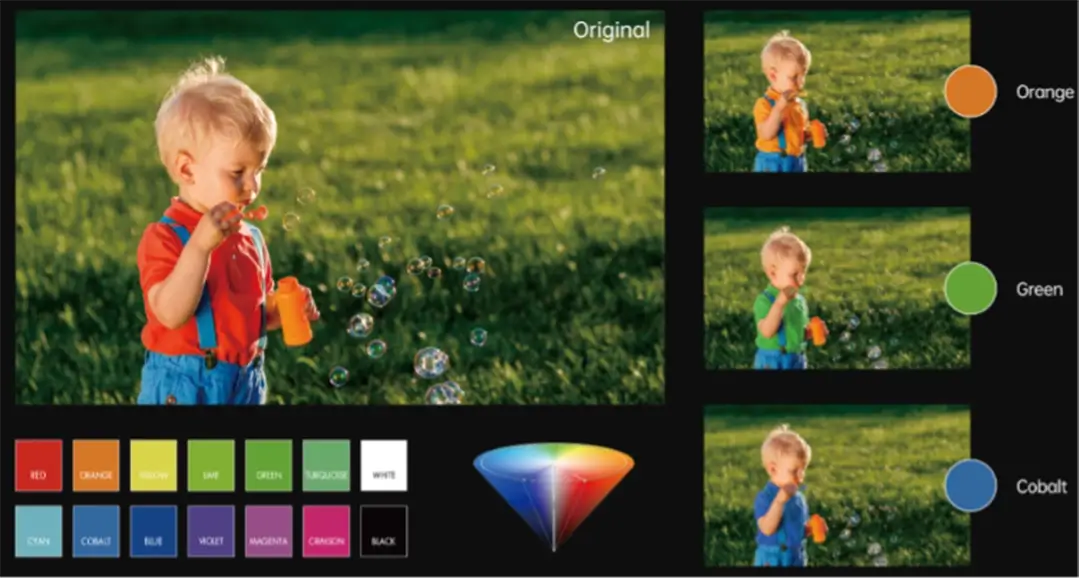
Below: 3D-LUT Feature

HDR (High Dynamic Range) Support:
Many LED processors now support HDR, which allows for a wider range of colours and greater contrast between light and dark areas. HDR technology enhances the visual impact of LED displays, making content appear more realistic and immersive.
Flexible Input & Output Options:
LED processors offer a wide range of input and output options, including HDMI, DisplayPort, DVI, and SDI, as well as various network protocols. This flexibility allows for seamless integration with different video sources and simplifies the setup of LED display systems.
Multi-Screen Synchronisation:
LED processors can synchronise multiple LED display modules to create large-scale video walls or immersive display environments. Advanced synchronisation algorithms ensure that content is displayed consistently across all modules, without any visible seams or gaps.
Real-Time Monitoring & Control:
Many LED processors include built-in monitoring and control features that allow users to remotely monitor the status of the display system and make real-time adjustments as needed. This enhances reliability and ensures optimal performance of LED display installations.
RS232/Telnet control: Many functions of the LED processor can be controlled via common control methods like Crestron, Extron, Control 4, etc.
Energy Efficiency:
LED processors have become more energy-efficient, consuming less power while delivering improved performance. This not only reduces operating costs but also helps to minimise the environmental impact of the overall display installation.
Modular Design:
Some LED processors feature a modular design, allowing users to easily upgrade or expand their display systems as needed. Modular LED processors offer scalability and flexibility, enabling users to customise their setups to suit their specific requirements.
Below: Colorlight X100 Pro - Modular LED Processor
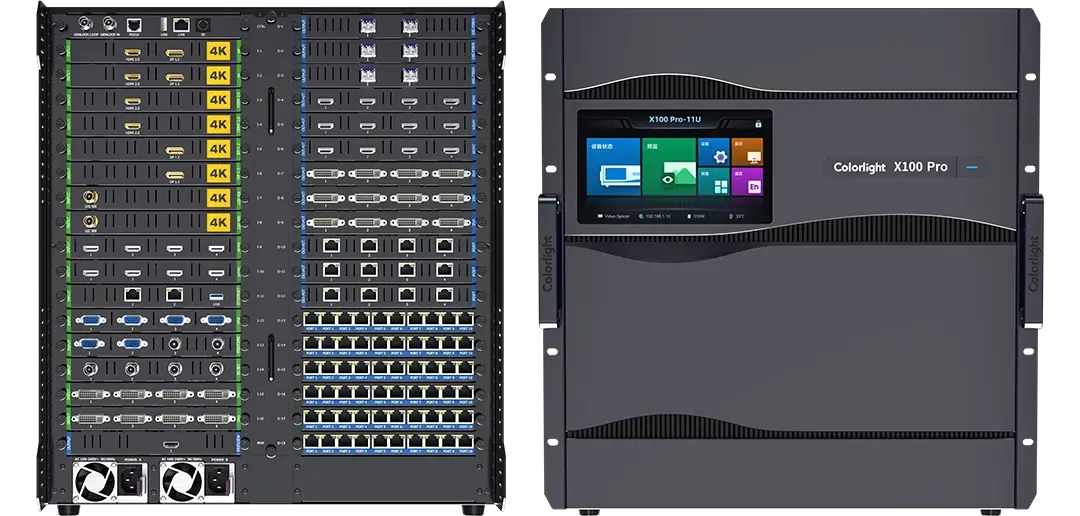
Overall, the new capabilities of LED processors enable them to deliver higher-quality visuals, greater flexibility, and improved reliability compared to previous generations. These advancements have contributed to the widespread adoption of LED display technology across various industries and applications.
An LED wall receiver card, also known as a receiving card or receiver card, is an essential component of LED display systems. It is typically installed within each LED display panel/cabinet and plays a crucial role in controlling and managing the display. Typically each LED cabinet will have at least 1 receiver card, which is addressed directly by the LED processor.
Here's an overview of what an LED wall receiver card does:

Data Reception:
The LED wall receiver card receives data signals from the LED processor or sender card. These data signals contain information about the content to be displayed on the LED panel, including pixel colour, brightness, and intensity.
Data Decoding:
Once the data signals are received, the LED wall receiver card decodes them to determine how each individual LED on the display panel should be illuminated. This decoding process involves interpreting the data signals and converting them into commands that control the behaviours of the LEDs.
Pixel Control:
The LED wall receiver card controls the illumination of each pixel on the LED display panel based on the decoded data signals. It ensures that the correct colour and brightness levels are applied to each LED, resulting in the accurate reproduction of the content being displayed.
Driver Output:
After decoding the data signals and controlling the pixels, the LED wall receiver card generates output signals that drive the LEDs on the display panel. These output signals provide the necessary power and control signals to each LED, causing them to emit light according to the desired specifications.
Monitoring & Control:
Many LED wall receiver cards include monitoring and control features that allow users to monitor the status of the display panel and make real-time adjustments as needed. This may include features such as temperature monitoring, power management, and diagnostic capabilities to ensure the reliable operation of the LED display panel.
Overall, an LED wall receiver card is a critical component of LED display systems, responsible for receiving, decoding, and controlling data signals to accurately display content on the LED panel. It plays a key role in ensuring that the LED display operates effectively and delivers high-quality visuals to viewers.
In an LED setup, the receiver card plays a vital role in the following aspects:
Data Reception & Interpretation:
The LED wall receiver card receives data signals from the LED processor. These data signals contain information about the content to be displayed on the LED panel, such as pixel colour, brightness, and intensity.
The receiver card interprets and decodes these data signals to determine how each individual LED on the display panel should be illuminated. It converts the digital instructions into analogue signals that control the behaviour of the LEDs.
Pixel Mapping/Distribution & Control:
Once the data signals are decoded, the LED wall receiver card maps the content to the individual pixels on the LED display panel. Each pixel corresponds to a specific location on the panel, and the receiver card determines the appropriate colour and brightness values for each pixel.
The receiver card then sends control signals to the LEDs, instructing them on how to emit light to accurately reproduce the desired content. It controls the intensity and colour of each LED to create the desired visual effect.
Timing & Synchronisation:
The LED wall receiver card ensures proper timing and synchronisation of the LED display modules. It coordinates the operation of the LEDs to ensure smooth transitions between frames and prevent visual artefacts such as flickering or tearing.
The receiver card synchronises with the LED processor to ensure that the display modules update at the correct refresh rate and maintain consistent performance.
Monitoring & Diagnostics:
Many LED wall receiver cards include monitoring and diagnostic features that allow users to track the status and performance of the LED display panel.
This may include temperature monitoring, power consumption tracking, and error detection capabilities to identify and address any issues that may arise during operation.
In summary, the LED wall receiver card serves as a critical component in an LED setup and programming, responsible for receiving, interpreting, and controlling the data signals that drive the LED display modules. It ensures accurate reproduction of content, proper timing and synchronisation, and provides monitoring and diagnostic capabilities to maintain optimal performance.
Better controllers and receivers can offer a wide range of advanced features and functions that enhance the performance, flexibility, and user experience of LED displays.
Extensive Calibration:
Precise colour calibration ensures accurate colour reproduction across the display, resulting in vibrant and lifelike images. Some controllers and receivers offer advanced colour management features for fine-tuning colour accuracy and consistency.
Below: Colorlight CCM6000 calibration camera setup
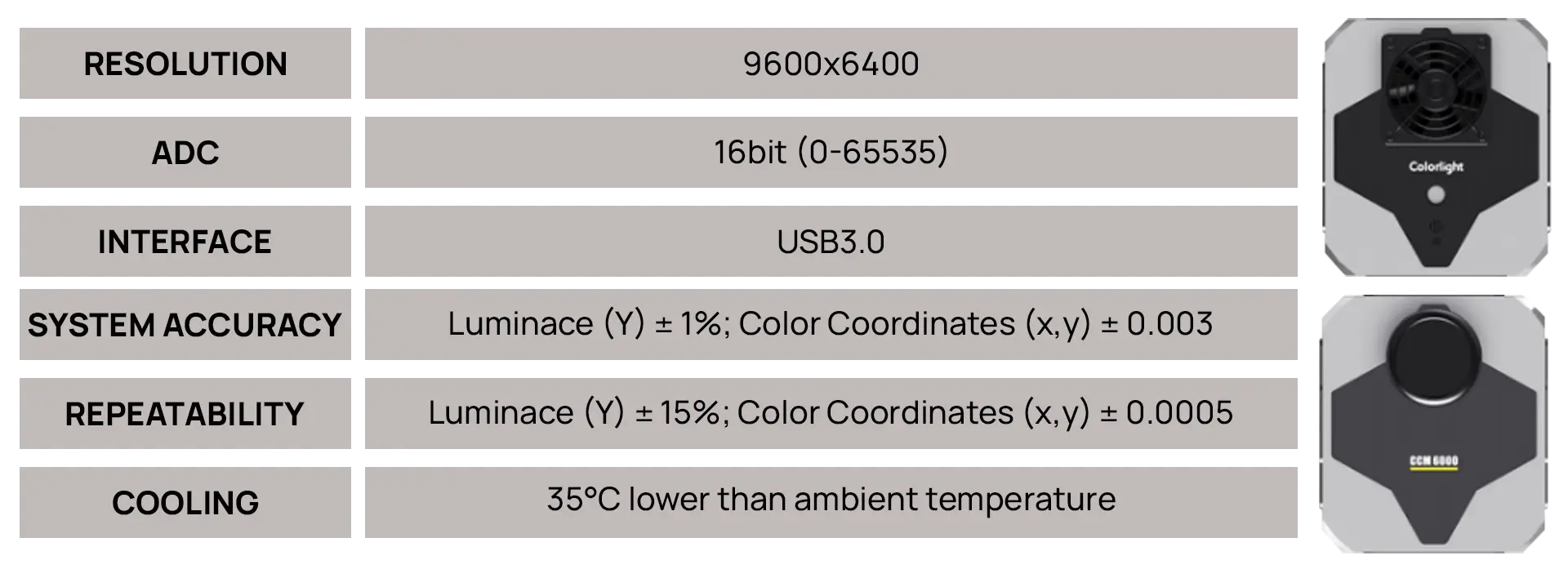
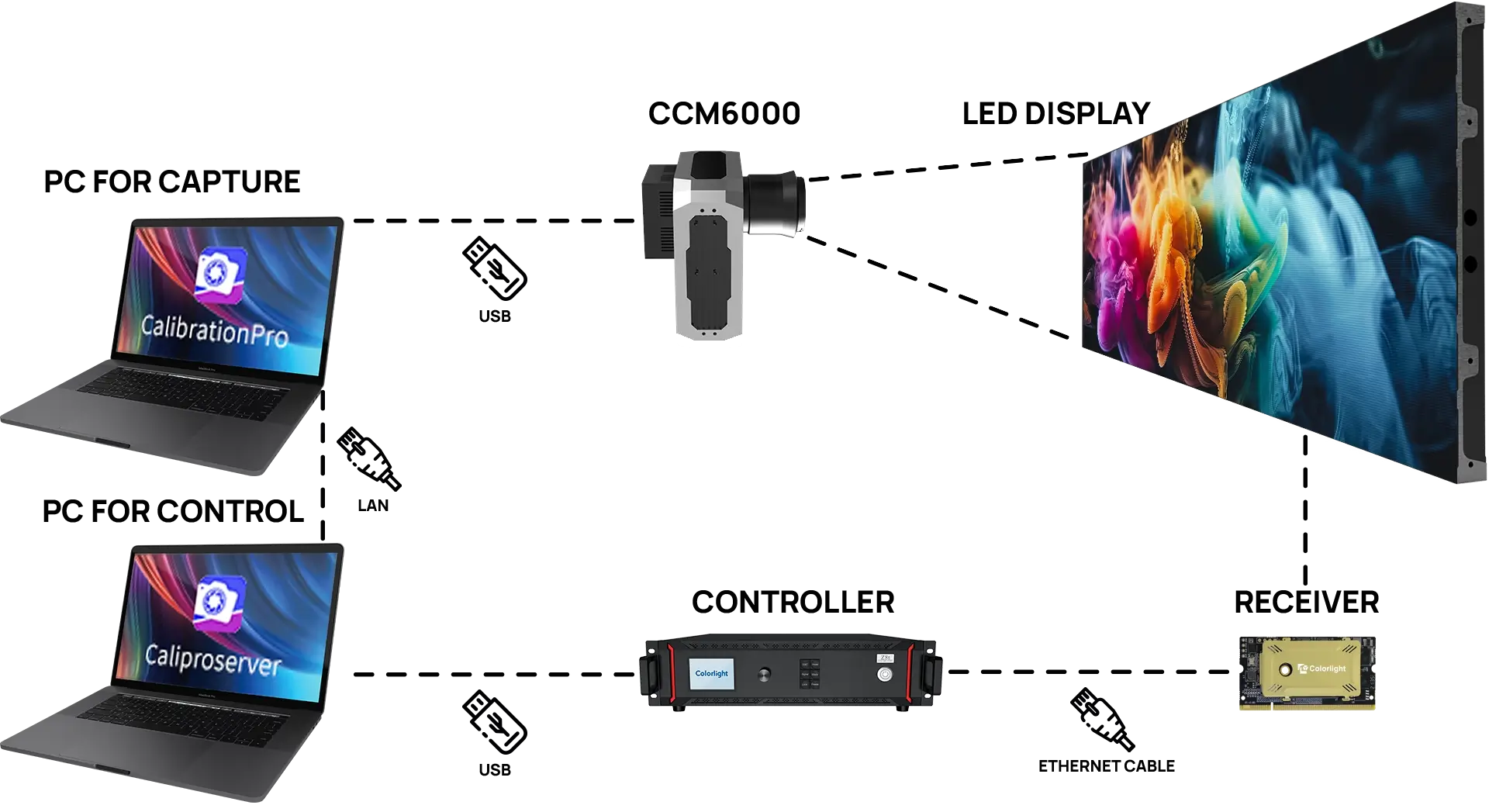
Higher Refresh Rate:
A higher refresh rate for LED walls ensures smoother motion and reduces flickering, which is particularly important for capturing video contenton camera. LED displays with high refresh rates (typically 120Hz or higher) deliver smoother motion and eliminate motion blur, providing a better viewing experience for both in-person audiences and cameras capturing the display.
High refresh rates also help minimise latency between multiple display surfaces and the camera feeds, ensuring that the captured footage accurately represents what is displayed on the LED wall in real-time.
Multi-Screen Synchronisation:
Controllers and receivers with multi-screen synchronisation capabilities enable seamless integration of multiple display modules into larger video walls or display arrays. This ensures uniform content across all screens and eliminates visible seams or gaps.
Shutter Lock (Synchronisation) to Camera:
Shutter lock or synchronisation features synchronise the refresh rate of the LED display with the frame rate of the camera, eliminating rolling shutter effects and ensuring clean, artefact-free footage.
This feature is crucial for professional video production environments where precise synchronisation between the display and camera is necessary to capture high-quality video content without distortion or flickering.
Flexible Input & Output Options:
Support for a wide range of input and output options, including HDMI, DisplayPort, DVI, SDI, and Ethernet, allows for seamless connectivity with various video sources and display configurations.
Greater Pixel Control:
Higher specification receiver cards can control a larger number of pixels, allowing for greater resolution displays, or fewer receiver cards per LED display cabinet.
The key to this answer is understanding what functionality and performance you require from your display. During the design and specification process it is imperative that you inform your LED provider of all the potential use cases for the screen as this will determine which processor and receiver card specs you will need. Changing these later can be a costly mistake to make!
In summary, getting the LED processor and receiver card specifications right in an LED display setup is essential for achieving good image quality, but most importantly the functionality you need from the LED display.
These components are critical for the successful operation and management of the LED display system, and careful consideration should be given to selecting the right ones for specific requirements and applications.
Luckily at LED Studio, and in collaboration with Colorlight, we are here to help you make the right choices based on your display requirements, so if you need some help please get in touch.
Scaling: Image scaling resizes images by enlarging or reducing dimensions, using algorithms to maintain quality and aspect ratio. Find out more here
Picture in picture (PIP): Picture-in-Picture (PiP) displays a smaller video window within a larger screen, allowing users to watch two videos or multitask simultaneously.
Low latency: Low latency on a display means minimal delay between input signal and on-screen response. Benefits include smoother gameplay, reduced lag in live video and repeated content on screen, and improved real-time interactions and responsiveness.
Colour Correction: Colour correction on a display involves adjusting colors to ensure accurate representation, aligning the display’s output with the intended colours of the content. It enhances visual quality and consistency.
Format convesion: Format conversion refers to changing video signal formats (resolution, aspect ratio, or frame rate) to match the display’s requirements. It ensures compatibility between various input sources and output displays, enabling seamless integration of different devices in a video system.
Refrest rate: In display terms, refresh rate refers to the number of times per second a display updates its image, measured in Hertz (Hz). A higher refresh rate results in smoother motion, reducing flicker and improving the viewing experience, especially in fast-paced content like gaming or action videos.